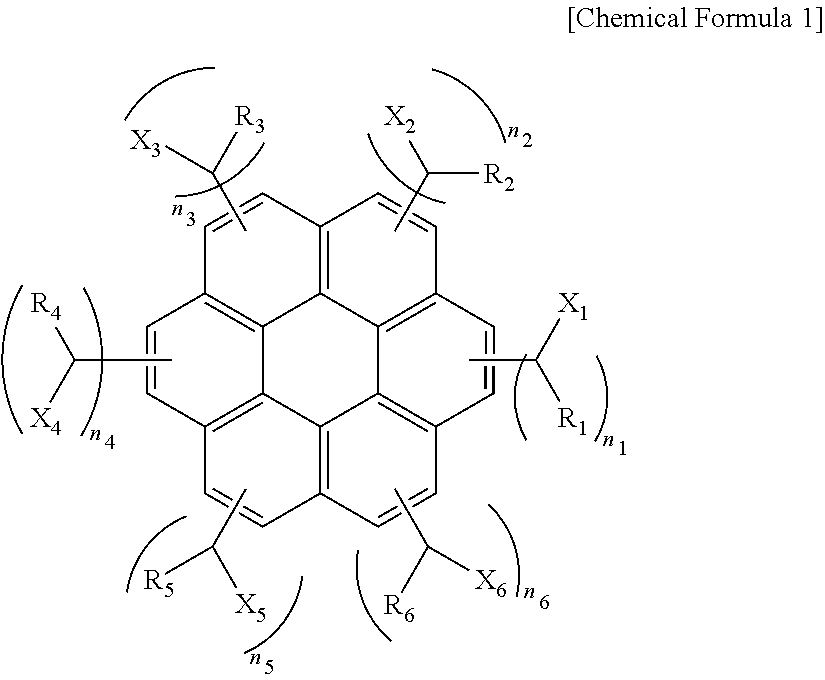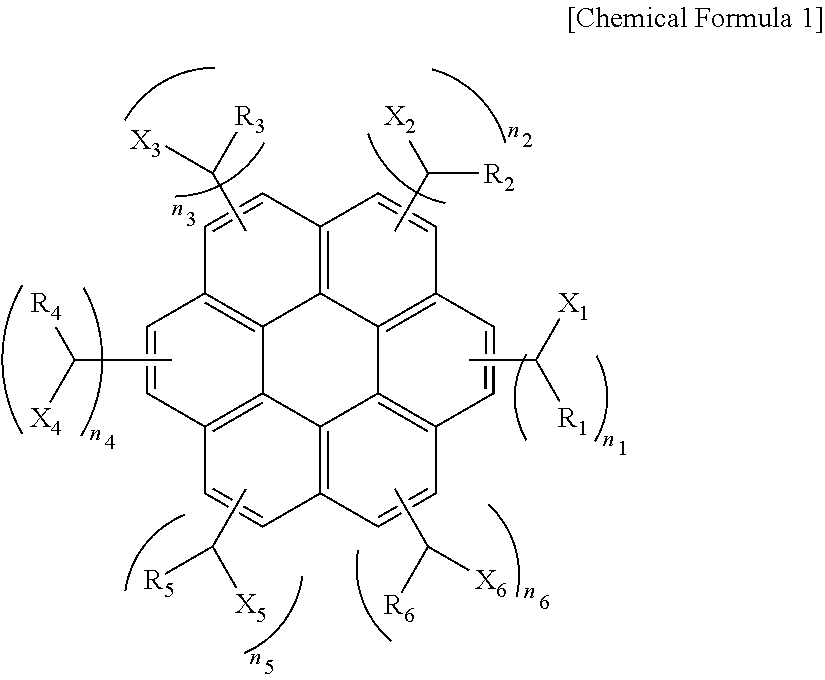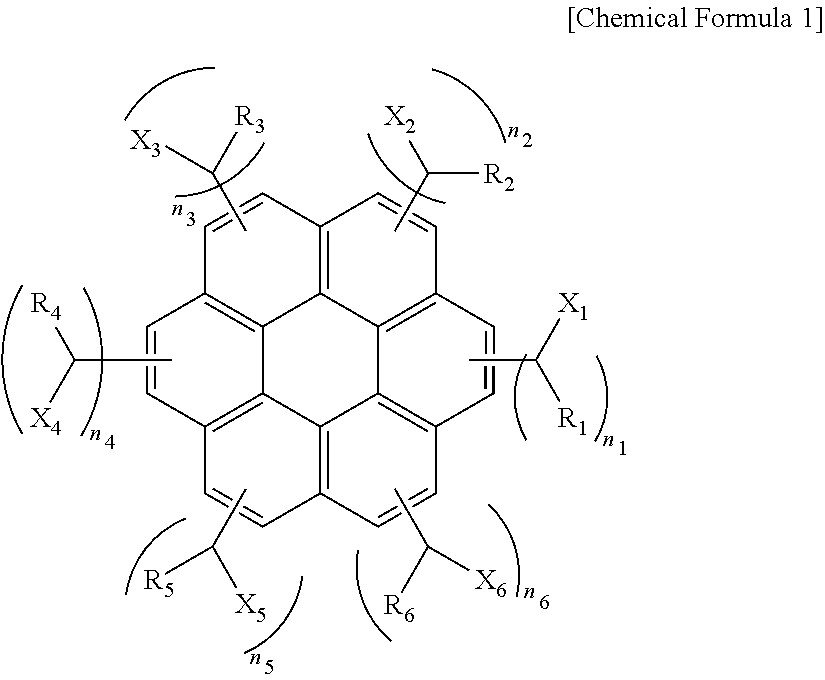Aromatic ring-containing compound for a resist underlayer and resist underlayer composition
a technology of resist and composition, which is applied in the field of aromatic ring-containing compound for resist underlayer and resist underlayer composition, can solve the problem that resist may not provide resistance to the etching step,
- Summary
- Abstract
- Description
- Claims
- Application Information
AI Technical Summary
Benefits of technology
Problems solved by technology
Method used
Image
Examples
example 1
[0056]A solution including 30.1 g (0.1 mol) of coronene, 47.1 g (0.6 mol) of acetyl chloride, and 79.8 g (0.6 mol) of trichloro aluminum dissolved in 1000 g of toluene was put into a reactor equipped with a mechanical agitator, a cooler, a 2 L 4-neck flask and was agitated followed by reaction for 10 hours. After the reaction was complete, trichloro aluminum was removed using water. To the resulting compound, 37.83 g (1.0 mol) of sodium borohydride was added followed by reaction for 17 hours. After the reaction was complete, reaction by-products were removed using a water / methanol mixture to obtain a compound of the following Chemical Formula 2 (average molecular weight=530 and 1≦n1+n2+n3+n4+n5+n6≦6).
[0057]
example 2
[0058]A solution including 30.1 g (0.1 mol) of coronene, 84.32 g (0.6 mol) of benzoyl chloride, and 79.8 g (0.6 mol) of trichloro aluminum dissolved in 1000 g of toluene was put into a reactor equipped with a mechanical agitator, a cooler, a 2 L 4-neck and was agitated followed by reaction for 10 hours. After the reaction was complete, trichloro aluminum was removed using water. To the resulting compound, 37.83 g (1.0 mol) of sodium borohydride was added followed by reaction for 19 hours. After the reaction was complete, reaction by-products were removed using a water / methanol mixture to obtain a compound of the following Chemical Formula 3 (average molecular weight=910 and 2≦n1+n2+n3+n4+n5+n6≦6).
[0059]
example 3
[0060]A solution including 30.1 g (0.1 mol) of coronene, 114.01 g (0.6 mol) of 2-naphthoyl chloride, and 79.8 g (0.6 mol) of trichloro aluminum dissolved in 1000 g of toluene was put into a reactor equipped with a mechanical agitator, a cooler, a 2 L 4-neck flask and was agitated followed by reaction for 10 hours. After the reaction was complete, trichloro aluminum was removed using water. To the resulting compound, 37.83 g (1.0 mol) of sodium borohydride was added followed by reaction for 19 hours. After the reaction was complete, reaction by-products were removed using a water / methanol mixture to obtain a compound of the following Chemical Formula 4 (average molecular weight=980 and 2≦n1+n2+n3+n4+n5+n6≦6).
[0061]
PUM
| Property | Measurement | Unit |
|---|---|---|
| wavelength region | aaaaa | aaaaa |
| wavelength region | aaaaa | aaaaa |
| wt % | aaaaa | aaaaa |
Abstract
Description
Claims
Application Information
 Login to View More
Login to View More - R&D
- Intellectual Property
- Life Sciences
- Materials
- Tech Scout
- Unparalleled Data Quality
- Higher Quality Content
- 60% Fewer Hallucinations
Browse by: Latest US Patents, China's latest patents, Technical Efficacy Thesaurus, Application Domain, Technology Topic, Popular Technical Reports.
© 2025 PatSnap. All rights reserved.Legal|Privacy policy|Modern Slavery Act Transparency Statement|Sitemap|About US| Contact US: help@patsnap.com



